The Stanford Linear Accelerator Center was renamed in 2009 to the SLAC National Accelerator Laboratory.
Notable for: unique electromechanical devices and systems in the longest accelerator in the world
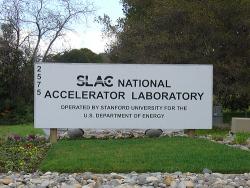
The Stanford Linear Accelerator Center was renamed in 2009 to the SLAC National Accelerator Laboratory.
Notable for: unique electromechanical devices and systems in the longest accelerator in the world
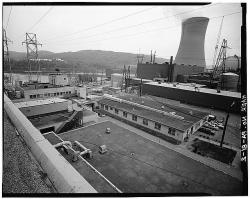
The first commercial central electric-generating station in the United States to use nuclear energy was the Shippingport Atomic Power Station of the Department of Energy and the Duquesne Light Company. In a dramatic high-tech display, ground was broken in 1954 during dedication ceremonies by President Dwight D. Eisenhower, who also opened it on May 26, 1958, as part of his "Atoms for Peace" program. Shippingport is located on the Ohio River about 25 miles from Pittsburgh.
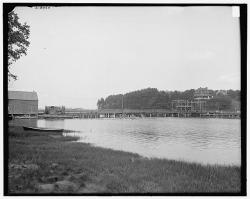
Sewall's Bridge is a singular example of an era when wooden trestle bridges carried highway traffic across New England waterways. It is the earliest pile-trestle bridge for which an authentic construction record exists, and the oldest for which builder's drawings survive. Spanning the York River, it was named for Major Samuel Sewall, Jr., the civil engineer who designed and constructed it.
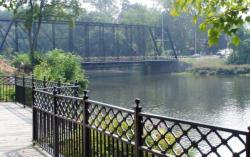
The Second Street Bridge is a simply ornamented, wrought-iron structure. It is 18 feet wide and spans 225 feet over the Kalamazoo River. It was built to replace a dilapidated wooden bridge that had served the area for nearly 50 years.
The bridge is anchored to fieldstone abutments on each shore, and the deck is composed of wood beams. Iron lattice work provides structural stability and iron finials on the end posts provide aesthetic appeal. It includes a wooden pedestrian walkway.

The Savannah city plan, whose execution began in 1733, is distinguished from those of previous colonial towns by the repeated pattern of connected neighborhoods, multiple squares, streets, and designed expansion into lands held by the city. It is unique in the history of urban planning in a number of aspects, not the least of which is that the squares allow for more open space in Savannah than any city layout in history.
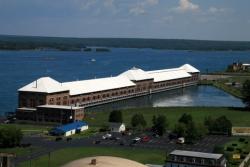
Located at the northern tip of Michigan where Lake Superior, Lake Michigan, and Lake Huron join together, the Sault Ste. Marie Hydroelectric Power Complex was built to harness the hydroelectric potential of the 20-foot falls at the headwaters of the St. Marys (sic) River, the sole outlet of Lake Superior. A century after its construction, the plant remains the largest low-head hydroelectric facility in the United States. Today, the Sault Ste. Marie plant supplies electricity to area residents, especially those in the Upper Peninsula of Michigan.
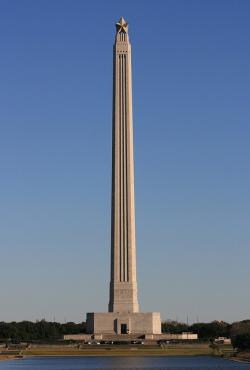
The San Jacinto Monument commemorates the decisive 1836 battle near the banks of the Buffalo Bayou and the San Jacinto River that allowed Texas to win independence from Mexico. It is the world's tallest monument, rising 15 feet higher than the Washington Monument.
In 1936, Daughters and Sons of the Republic of Texas led lobbying efforts to allocate funds for a monument that would mark the importance of the Battle of San Jacinto. Ground was broken on April 21, 1936 - 100 years to the day after the victorious battle.
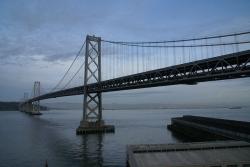
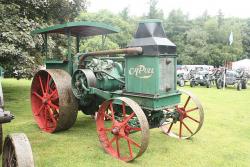
Beginning with the blacksmith shop of German immigrant Meinrad Rumely (1823-1904), this successive family of firms invented and produced a line of agricultural equipment that played a vital role in the evolution of farming based on the muscle of humans and animals to one based on the power of the steam and ultimately the internal-combustion engine. The M. & J. Rumely Co. became the M. Rumely Co., and then the Advance Rumely Co. The Allis-Chalmers Company acquired the business in 1931.
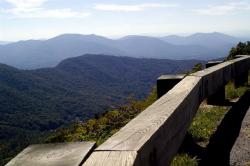
Designed to connect the Shenandoah National Park in Virginia and the Great Smokey Mountains National Park in North Carolina, the Blue Ridge Parkway was planned to provide pleasant motoring and to conserve and interpret the unique natural and cultural resources of the Southern Highlands. It was conceived also as a public works project to relieve unemployment in the Appalachian region during the Great Depression.
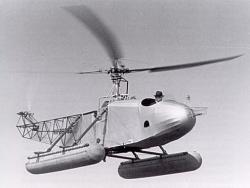
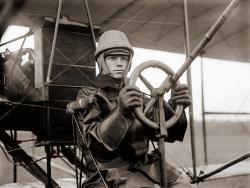
College Park Airport was founded in 1909 when the Wright Brothers came here to train the first military officers to fly in the givernment's first airplane. The airport is the oldest continuously operated airport in the world, and has come to be known as "The Field of Firsts" due to it being the…
Read More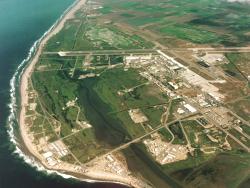
Established in 1946 to provide a comprehensive test and evaluation site for tactical missiles, Point Mugu has been instrumental in the development, test, evaluation and in-service support of systems including Regulus, Sparrow, Phoenix, Bullpup, Harpoon, SLAM, Tomahawk, Standard, and Rolling…
Read More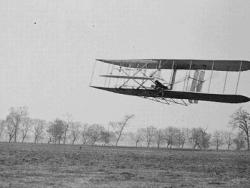
On this 84-acre meadow in 1904 and 1905, the Wright Brothers successfully mastered the mechanics of controlled, powered, heavier-than-air flight. The brothers also built the world’s first airport here, and in 1910 the Wright Company School of Aviation established a flying school on…
Read More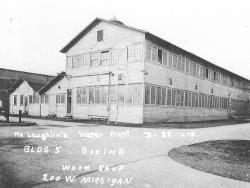
This former shipyard was the first home of the The Boeing Company, founded in 1916. Affectionately called the Red Barn, this structure was built in 1909, and became the historic birthplace of Boeing aircraft production. Starting with the Boeing Model C, all early Boeing production…
Read More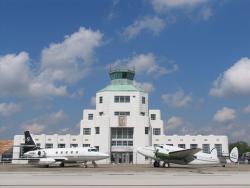
The 1940 Air Terminal is a beautiful and rare example of classic art deco airport architecture from the golden age of flight. Designed by noted architect Joseph Finger, the Terminal was built to meet Houston’s growing role as a major center for air commerce in the 1930s. Its grand…
Read More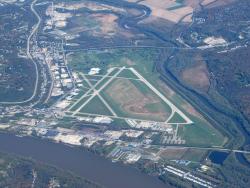
Lunken Field, now also known as Cincinnati Municipal Lunken Airport, opened in 1925 on ground purchased from the Cincinnati Polo Club. The nation’s largest municipal airport at the time, it attracted several aerospace enterprises, starting with early aviator J. Richard “Dixie” Davis, who…
Read MoreThe Cincinnati Observatory, “The Birthplace of American Astronomy,” is the oldest professional observatory in the United States. Ormsby MacKnight Mitchel, the “Father of American Astronomy,” founded the observatory in 1842. John Quincy Adams laid the cornerstone for the…
Read More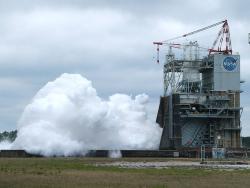
This rocket propulsion test complex was created to flight-certify all first and second stages of the Apollo Saturn V rocket. The first test-firing occurred on April 23, 1966. Subsequent to the Apollo Program, these test stands were modified to support the testing requirements of the…
Read More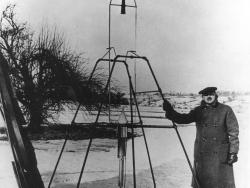
On March 16, 1926 Dr. Robert H. Goddard, also known as "the father of modern rocketry," launched the world’s first liquid propellant rocket from a point 1000 feet S.S.E. of the plaque on the property of the Asa M. Ward Family. Erected by the American Rocket…
Read More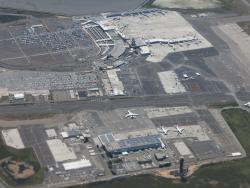
This site, formerly known as Oakland Municipal Airport, served as the gateway to the Pacific during aviation’s pioneering age of trans-Pacific flight. Among other notable events, Albert Hegenberger and Lester Maitland departed from the airfield on 28 June 1927 on the first flight…
Read More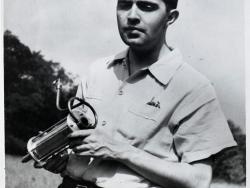
The first company in the United States dedicated solely to the production of the liquid rocket engine, Reaction Motors, Inc. (RMI) was formed in 1941. Its four founders were rocket enthusiasts and members of the American Rocket Society. RMI developed the rocket motors that powered…
Read More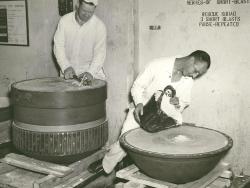
Built in 1880 as the Piccatinny Powder Depot, this site was the major supplier of smokeless powder to the military for many years. Since World War II, Picatinny Arsenal has been at the forefront of research, design, and development of a wide variety of advanced munitions for ground, airborne and…
Read More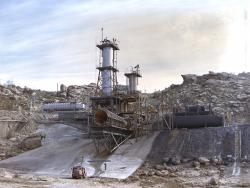
On 15 November 1950, the SSFL conducted its first official test with a Rocketdyne-designed XLR43-NA-1 large liquid propellant rocket engine, which later became the Redstone engine. Encompassing 2558 acres, 18 large static test stands, 5 component test laboratories and an advanced…
Read More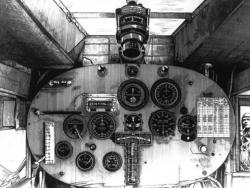
On this site, which was the Dutch Flats Airport, Charles A. Lindbergh made the first flight of his Spirit of St. Louis airplane, constructed in 60 days by dedicated employees of Ryan Airlines, Inc. The 20-minute flight on 28 April 1927 was witnessed by those who built the aircraft.…
Read More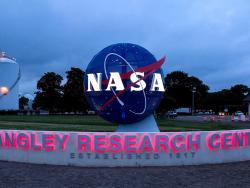
The Langley Memorial Aeronautical Laboratory, now the core of the Langley Research Center, was a unique facility that served as the nexus of aerodynamic research in the U.S. from its beginning in 1917 to its transformation into NASA’s Langley Research Center in 1958. It achieved…
Read MoreT.S.C. Lowe’s Observation Flight
Thaddeus Sobieski Constantine Lowe demonstrated the use of a hydrogen-filled balloon in aerial reconnaissance through a series of tethered ascents in June, 1861 in front of…
Read MoreThe Purdue University Airport was the first collegiate owned airport in the United States. It hosted Amelia Earhart for her final adventure, was the training ground for test pilots such a Jimmy Johnson and Ivan Kincheloe, balloonist Malcolm Ross, and astronaut Neil Armstrong.…
Read More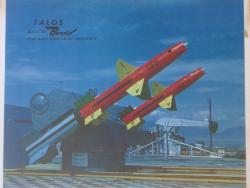
This site, originally the home of the Eclipse-Pioneer Division of the Bendix Aviation Corporation, has produced navigational instruments and engine components since 1938. Providing instruments that flew with Lindbergh across the Atlantic, and Admiral Byrd in the cold of Antarctica;…
Read More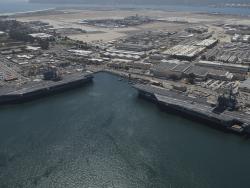
Known as the birthplace of Naval Aviation, North Island was the site of the first successful seaplane flight and the first amphibious flight in the U.S., both made by Glenn Curtiss. The first Naval pilot, Lt. T.G. Ellyson, was trained here at the Curtiss Aviation Camp. A flight…
Read More